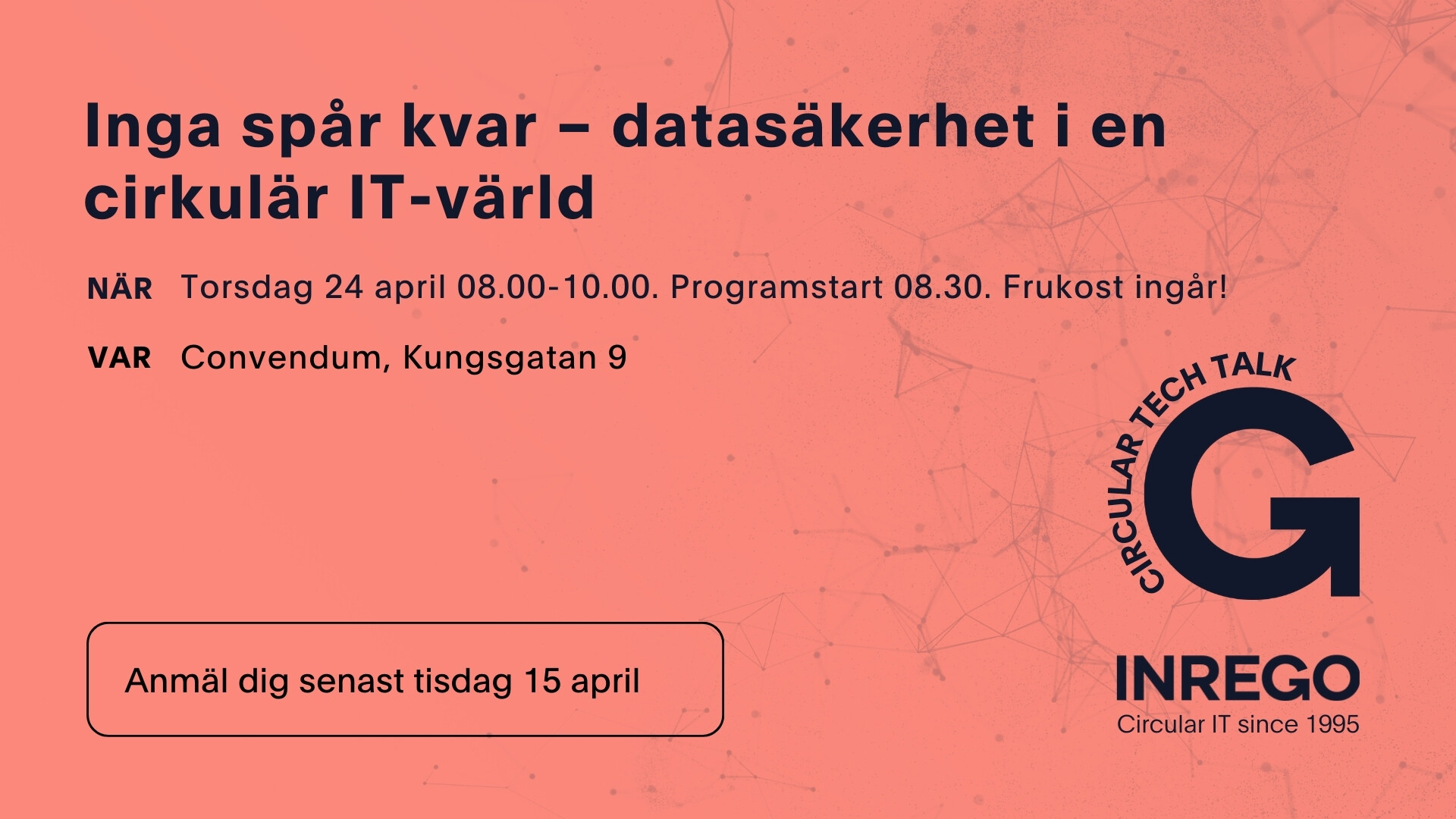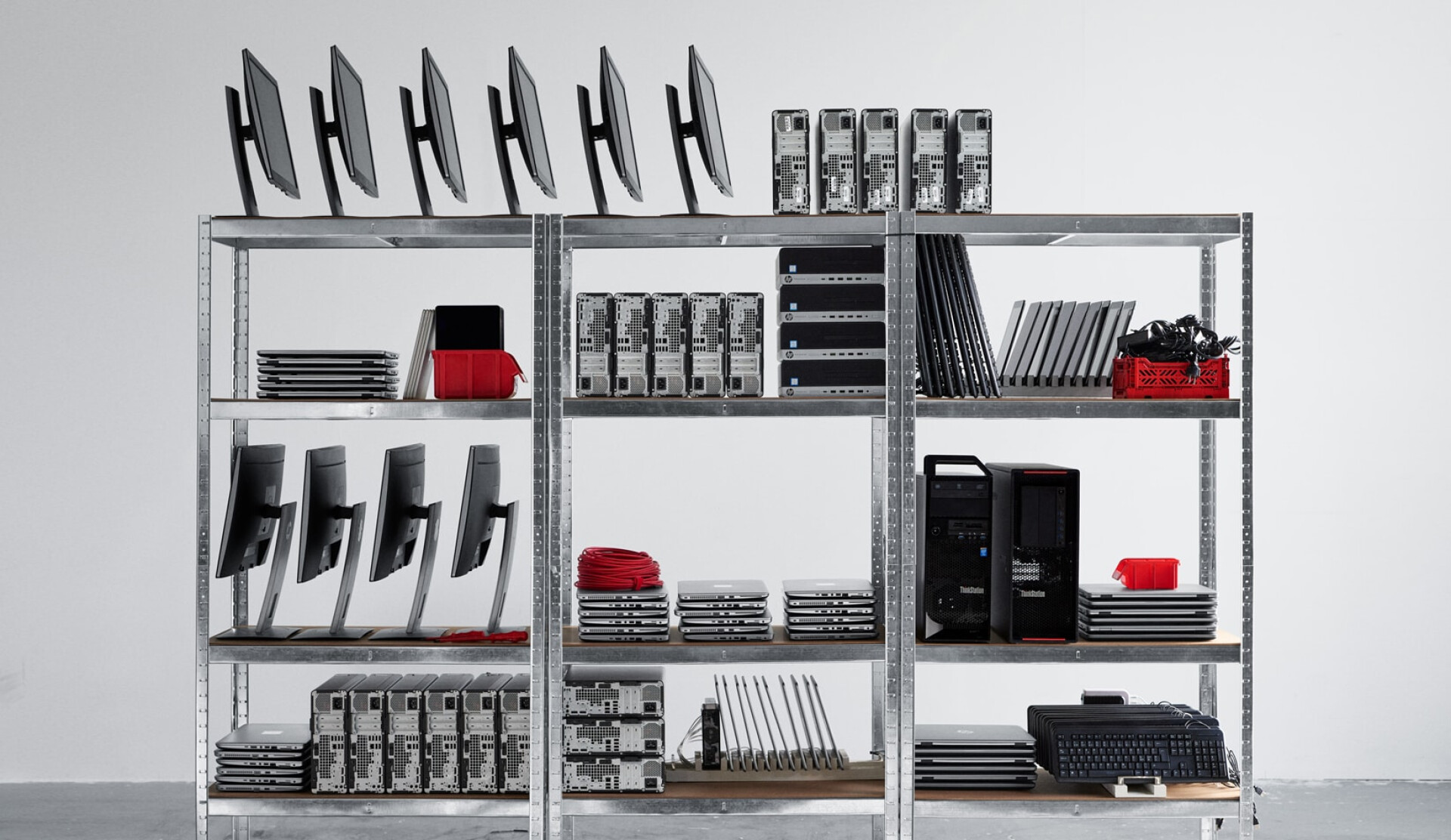What happens to your data when you're done with your computer? It's important to pay attention to security, not just while the device is in use, but also after it leaves your organization.
Data security and sustainability go hand in hand when it comes to IT reuse. Organizations committed to sustainability have responsible processes in place for handling devices they no longer need. Selling your IT equipment to a certified circular provider is a smart way to conserve natural resources and give your hardware a second life. It’s encouraging to see more and more companies turning to circular IT to reach their sustainability targets while keeping costs down.
But what about security when devices are passed on? A common misconception is that IT reuse poses a data security risk. At Inrego, we use Blancco, a world-leading and certified data erasure software, to ensure that all information is thoroughly wiped before any device is resold. The entire process is fully traceable.
According to the International Data Sanitization Consortium (IDSC), there are three approved methods for securely erasing data from digital devices: physical destruction, cryptographic erasure, and software-based data erasure—the method we use. By for example overwriting stored data with randomly generated 1s and 0s in accordance with approved standards, we make sure the information can’t be recovered.
Physical destruction is another common method, but it’s neither more secure than software-based erasure nor a sustainable choice, especially if the device is still functional. “Unlike physical destruction, data erasure preserves the device’s functionality, making it suitable for reuse and a better option from a sustainability perspective,” says Andreas Ericson, Inrego’s CIO



